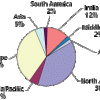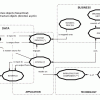Strategic advice to leverage new technologies
Technology is at the heart of nearly every enterprise, enabling new business models and strategies, and serving as the catalyst to industry convergence. Leveraging the right technology can improve business outcomes, providing intelligence and insights that help you make more informed and accurate decisions. From finding patterns in data through data science, to curating relevant insights with data analytics, to the predictive abilities and innumerable applications of AI, to solving challenging business problems with ML, NLP, and knowledge graphs, technology has brought decision-making to a more intelligent level. Keep pace with the technology trends, opportunities, applications, and real-world use cases that will move your organization closer to its transformation and business goals.
Recently Published
Big Data in the Enterprise: Part I -- Hadoop
This survey examined the business uses of real-time data and organizations' readiness to exploit real-time digital data streams. More than half (67%) of the 117 responding organizations are headquartered or based in Europe, with 19% in North America, 6% in the Middle East, 5% in Asia/Australia/Pacific, and the remainder elsewhere in the world.
Emergent Agility: Best Practice Equivalence
Best practices are prescriptive, and Agile development opposes prescription. So, in this sense, there are no Agile best practices. Managers faced with a need to impose new processes are always in search of guidance, however, and need to know that they are doing what they have set out to do -- or at least are on track to do so. Guidance, whether it is called "best practices," "good things to do," or "useful approaches," is still necessary.
In this issue, we revisit the topic of real-time data. First, we have a fresh set of data, made more useful by the fact that we can compare it historically to the previous survey. Second, we have a solid "bird's eye" view of the DDS space through the high-level conceptual framework articulated by Federico and Gabe. And, third, we have a very pragmatic "nuts and bolts" view of the same space from Manjunath.
By focusing merely on Big Data, you may be missing the real revolution — digital data streams (DDS). The reason DDS is easy to miss is that it's like Big Data, but it's the dynamic dimension of Big Data — and in motion.
Recently, with the availability of real-time digital data streams (DDS) and the so-called Big Data that can potentially provide valuable data for an organization, we are witnessing a major transformation in the dynamics of the data-based, decision-making phenomenon. Real-time DDS consists of data that is continuously delivered immediately after creation or collection, which organizations can utilize in real time. Often, with this type of data — described as unstructured or semistructured, high volume, and high velocity — there is a minimal or zero time delay in its streaming. Through insights from the latest CBR survey results, this article examines the challenges related to value creation using real-time DDS as well as the readiness levels of responding organizations.












